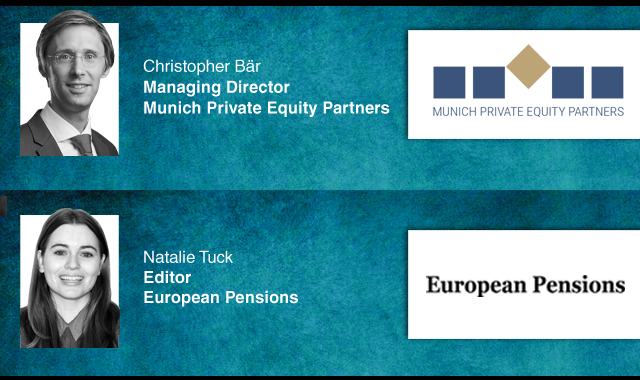A reform of the Swiss second pillar pension system is “urgently required” according to Swisscanto.
Publishing its 20th annual edition of its Swisscanto Pension Funds Study, it found that although the country’s pensions are “securely positioned” the second pillar system is facing “major structural challenges”.
It said that pension schemes have responded to demographic change and the ongoing negative interest rate environment and reduced conversion rates. However, active insured members and the newly retired have had to accept declining benefit levels for more than 10 years.
“In order to maintain the long-term pension benefits target, reform is urgently required. Additional contributions are needed to compensate for the declining level of benefits. The way forward is via higher capital market returns and further measures to increase individual retirement assets,” it stated.
Its study found huge disparities in performance, with returns ranging from 3 per cent to 19.3 per cent in 2019, with an average of 10.85 per cent. This is particularly significant, since higher capital gains offer a way out of the political impasse: according to the study, an additional annual return of just 0.6 per cent could, for example, render the politically controversial increase in the retirement age unnecessary.
The benefit reductions resulting from a decrease in the minimum conversion rate from 6.8 per cent to 6.0 per cent could also be offset, meaning that the pillar two pension reform would be more likely to gain public approval, Swisscanto stated.
The top-performing 10 per cent of pension funds have generated an annual return of 5.4 per cent over the last five years. The one percentage point difference compared with the average of all pension funds (4 per cent) is considerable. Looking at the investment strategy of these high-flyers, the high proportion of equities and the low proportion of bonds is notable, the study found.
At the end of 2019, the poorest-performing 10 per cent of pension funds still held a substantial 39 per cent of their assets in unprofitable bond investments, even though the healthy ratio between active insured members and pensioners would allow them to bear higher risk and thus enjoy better earnings opportunities. Over a period of five years, they generated an average return of 2.6 per cent. This is a substantial 2.8 percentage points p.a., or cumulatively more than 14 per cent, lower than the return achieved by funds at the top of the ranking.
Taking a closer look at the source of the pillar two savings contributions reveals a surprising fact: in 2019, the ‘third contributor’ accounted for 66 per cent of the contributions to pension fund assets. This means that capital market income last year was almost twice as high as the contributions paid in by employers and employees combined last year.
In a long-term comparison, the performance contribution made by the capital markets over 10 years also overshadows the other two sources of funding, at almost 40 per cent. In contrast, just 37 per cent of savings contributions came from employers and 26 per cent from employees. The capital market has the highest relevance for occupational pensions. It should be much more involved in the development of solutions for the proposed reforms.
Commenting, Swisscanto Invest by Zürcher Kantonalbank head of asset management, Iwan Deplazes, said: “An additional annual return of just 0.6 per cent on the pension capital saved could, for example, compensate for the increase in the retirement age. Based on total estimated pension assets of just under CHF 1,000bn for Switzerland as a whole, an additional return of 0.6 per cent would mean additional income of CHF 6bn. The fact that better returns can be achieved by making full use of risk capacity is clearly demonstrated by the top-performing pension funds.”
Latest News
-
PensionsEurope stresses importance of secure retirement outcomes in switch from DB to DC
-
EIOPA has built pilot pension dashboards to test system – Hielkema
-
Irish Pensions Awards 2024 open for entries
-
Norway’s GPFG remains Europe’s largest investor in coal
-
DRV reiterates July pension raise and improves disability coverage
-
‘Vast majority’ of Finnish pensions invested responsibly - Tela
Podcast: The benefits of private equity in pension fund portfolios

The outbreak of the Covid-19 pandemic, in which stock markets have seen increased volatility, combined with global low interest rates has led to alternative asset classes rising in popularity. Private equity is one of the top runners in this category, and for good reason.
In this podcast, Munich Private Equity Partners Managing Director, Christopher Bär, chats to European Pensions Editor, Natalie Tuck, about the benefits private equity investments can bring to pension fund portfolios and the best approach to take.
In this podcast, Munich Private Equity Partners Managing Director, Christopher Bär, chats to European Pensions Editor, Natalie Tuck, about the benefits private equity investments can bring to pension fund portfolios and the best approach to take.
Podcast - The power of three: Using Common Contractual Funds to improve tax outcomes for investors

Large asset owners are still investing in equities in a way where they are taxed on their income. The implication is that they get a poorer return. They need to, and can, improve this, but how?
In this podcast, AMX Head of Client and Manager Development, Aaron Overy, and AMX Product Tax Specialist, Kevin Duggan, discuss with European Pensions Editor, Natalie Tuck, about three options to help ensure good withholding tax outcomes for institutional investors.
In this podcast, AMX Head of Client and Manager Development, Aaron Overy, and AMX Product Tax Specialist, Kevin Duggan, discuss with European Pensions Editor, Natalie Tuck, about three options to help ensure good withholding tax outcomes for institutional investors.
Mitigating risk
BNP Paribas Asset Management’s head of pension solutions, Julien Halfon, discusses equity hedging with Laura Blows
© 2019 Perspective Publishing Privacy & Cookies









Recent Stories